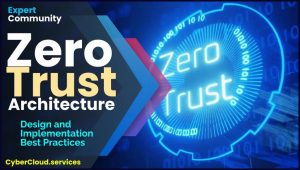Best Practices
Building Trust in an Untrusted World: Zero Trust Architecture and Illumio’s Zero Trust Segmentation
The Zero Trust Model for Cybersecurity Explained by Zero Trust Creator John Kindervag.
 Zero Trust Architecture is a cybersecurity concept that promotes the idea of not trusting any entity inside or outside a network by default.
Zero Trust Architecture is a cybersecurity concept that promotes the idea of not trusting any entity inside or outside a network by default.
Instead, it requires strict verification for anyone trying to access resources on the network, regardless of their location.
This approach helps organizations enhance their security posture by reducing the attack surface and minimizing the risk of data breaches.
Key Components of Zero Trust Architecture:
- Micro-Segmentation: Dividing the network into smaller segments to limit lateral movement of threats.
- Least Privilege Access: Providing users with the minimum level of access required to perform their tasks.
- Continuous Monitoring: Monitoring network traffic and user behavior in real-time to detect anomalies.
- Multi-Factor Authentication: Requiring multiple forms of authentication to verify user identities.
Illumio’s Zero Trust Segmentation
Illumio is a leading provider of Zero Trust Segmentation solutions that build upon the principles of Zero Trust Architecture to provide advanced network security.
How Illumio Enhances Zero Trust Architecture:
- Dynamic Segmentation: Illumio’s solution enables organizations to create dynamic micro-segments based on application behavior and user identity, allowing for granular control over network traffic.
- Adaptive Policies: Illumio’s platform automatically adjusts security policies based on real-time threat intelligence and network changes, ensuring continuous protection.
- Visibility and Control: Illumio provides detailed visibility into application dependencies and traffic flows, empowering organizations to enforce security policies effectively.
- Scalability: Illumio’s solution is designed to scale across complex and hybrid environments, making it suitable for organizations of all sizes.
By leveraging Illumio’s Zero Trust Segmentation capabilities, organizations can strengthen their security posture, protect critical assets, and mitigate the risks associated with modern cyber threats.



